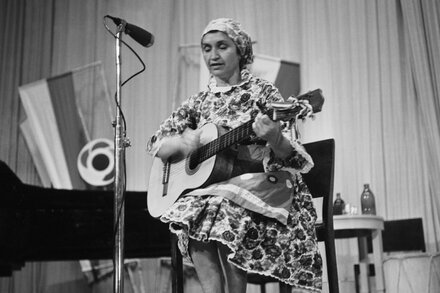Chilean folk icon Violeta Parra is increasingly celebrated as a creative genius whose expansive work redefined Latin American music and beyond. Her profound influence, from revolutionary songs to visual art, is finally ensuring she is “overlooked no more.”

Violeta Parra, the Chilean folk musician, composer, artist, and activist, is increasingly being recognized not just as a pivotal figure in Latin American music but as a creative genius whose influence redefined the genre. Often overshadowed by the political tumult of her era or the subsequent fame of artists she inspired, a renewed focus on her extensive body of work underscores her profound impact, ensuring she is “overlooked no more.”
Early Life and Dedication to Folklore
Born in 1917, Parra’s early life in rural Chile steeped her in the traditions of Chilean folk music. Her dedication went beyond performance; she became a tireless folklorist, traveling extensively throughout her country to collect, preserve, and document traditional songs, rhythms, and instruments that were at risk of being lost. This ethnographic work formed the bedrock of her artistic output, providing an authentic foundation for her later innovations.
A Revolutionary Musical Voice
Parra’s genius lay in her ability to take these traditional elements and fuse them with her own poetic and often politically charged lyrics, creating a sound that was both deeply rooted and utterly modern. Her songs addressed themes of social injustice, love, loss, and the human condition, resonating with a universal appeal. She innovatively incorporated traditional instruments with her distinctive vocal style, transforming simple melodies into complex narratives.
“Violeta Parra was not merely a singer or a composer; she was a cultural anthropologist, a poet, and a fearless commentator on her society,” noted one music historian. “She took the voice of the people and amplified it, giving it an unprecedented artistic sophistication.”
Her iconic compositions, such as “Gracias a la Vida” (Thanks to Life) and “Volver a los Diecisiete” (To Be Seventeen Again), transcend cultural boundaries and remain anthems of hope, resilience, and introspective beauty. These works, among hundreds, showcased her unparalleled lyrical depth and melodic invention.
Beyond Music: A Multifaceted Artist
Parra’s artistic expression extended well beyond music. She was a visual artist, creating tapestries (arpilleras) and oil paintings that earned her an exhibition at the Louvre Museum in Paris in 1964 – a remarkable achievement for a self-taught artist from Latin America. She also wrote poetry and was instrumental in establishing “peñas,” cultural centers that fostered traditional arts and political discourse, serving as incubators for the Nueva Canción Chilena (New Chilean Song) movement.
Enduring Legacy and Re-evaluation
Though her life ended tragically in 1967, Violeta Parra’s legacy has only grown in stature. She is widely considered the mother of the Nueva Canción movement, influencing generations of artists including Mercedes Sosa, Victor Jara, and Inti-Illimani. The renewed attention to her complete oeuvre – from her ethnographic field recordings to her visual art and seminal compositions – solidifies her place as an artist of extraordinary breadth and profound impact.
“Her work is a testament to the power of art to both preserve heritage and challenge the status quo,” stated a contemporary critic. “Her brilliance was not just in what she created, but in how she inspired countless others to find their own voice through the rich tapestry of Latin American culture.”
Her elevation from a significant regional figure to a globally recognized artistic genius confirms that Violeta Parra is, indeed, overlooked no more.
Source: Read the original article here.





